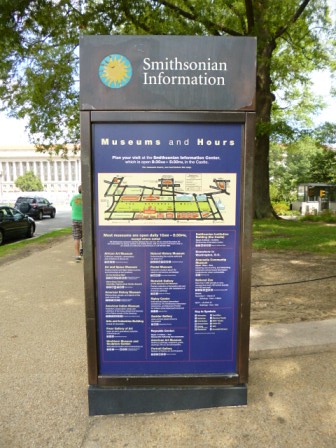Yes, yes, I know – I visited some of America’s most popular museums at the height of summer. If there was one thing I was going to have to contend with, it was crowds.

For those museums that are not at the top of every summer holidaymaker’s ‘must see’ list, the issue of too many people probably sounds like a happy problem to have. But not necessarily. The summer high season may well bring in valuable income, but all that crowding and queuing can lead to a less-than-satisfactory visitor experience – not to mention the maintenance costs associated with having hundreds of thousands of feet and fingers interacting with your building and your exhibits.
Now I should point out that I’m not very good with crowds and I’m an impatient queuer. Being short means I find it hard to navigate large numbers of people because my head is at shoulder height of many of the people around me. This physical characteristic combines with the psychological uncertainty that makes waiting in line torture at the best of times. In these circumstances I guess it was inevitable that some museums would have me in a twitching, toe tapping mess before I even crossed the lobby. At some point I decided to put this enforced waiting time to good use, and notice how well site signage was working under these very trying conditions.
Multiple desks, multiple lines, multiple signs
I arrived at the American Museum of Natural History just before opening time, and a fair few number of people had already begun to congregate on the front steps. The first bottleneck was having to clear security (In more or less every American museum there was security screening of some sort as you entered. An unfortunate sign of the times.). The next step was then to work out which ticket line was the right one to join. AMNH is one of the venues in the New York City Pass scheme (excellent value btw), which is meant to give you express entry although is sufficiently popular that in many cases it just means you get to join a shorter queue rather than walking right in. Security guards directed us to the right, and immediately to the right was a desk. But this wasn’t the right desk (still not quite sure what that desk was but the people behind it gave us vague onward directions), and it was a bit of a challenge to find where the right queue was and where it started.

As it turned out, the back of the queue was marked, clearly enough, by one of those standard signs you fit to tensabarriers. The problem is, there were sufficient number of people that this sign was obscured by people the majority of the time.

It really needed to be positioned a lot further back into the lobby than it was, or be reinforced by additional signage closer to the entrance. I encountered this issue on more than one occasion, where tensabarrier signs were positioned in such a way that they were obscured by people as the crowd overflowed beyond the anticipated area.
Now as I said at the outset, I was visiting in peak periods when visitor management strategies were being tested to their limit. So I don’t want to come across as too nit-picky about this (and I don’t mean to single out AMNH either). However, with that number of people arriving all at once, even the slightest bit of ambiguity or confusion is likely to make the bottlenecks even worse. So for me it was a reminder that our signage strategies and visitor sight lines should be tested under all circumstances – what makes sense in the relatively calm periods when we often plan signage may be far less obvious at peak times.

